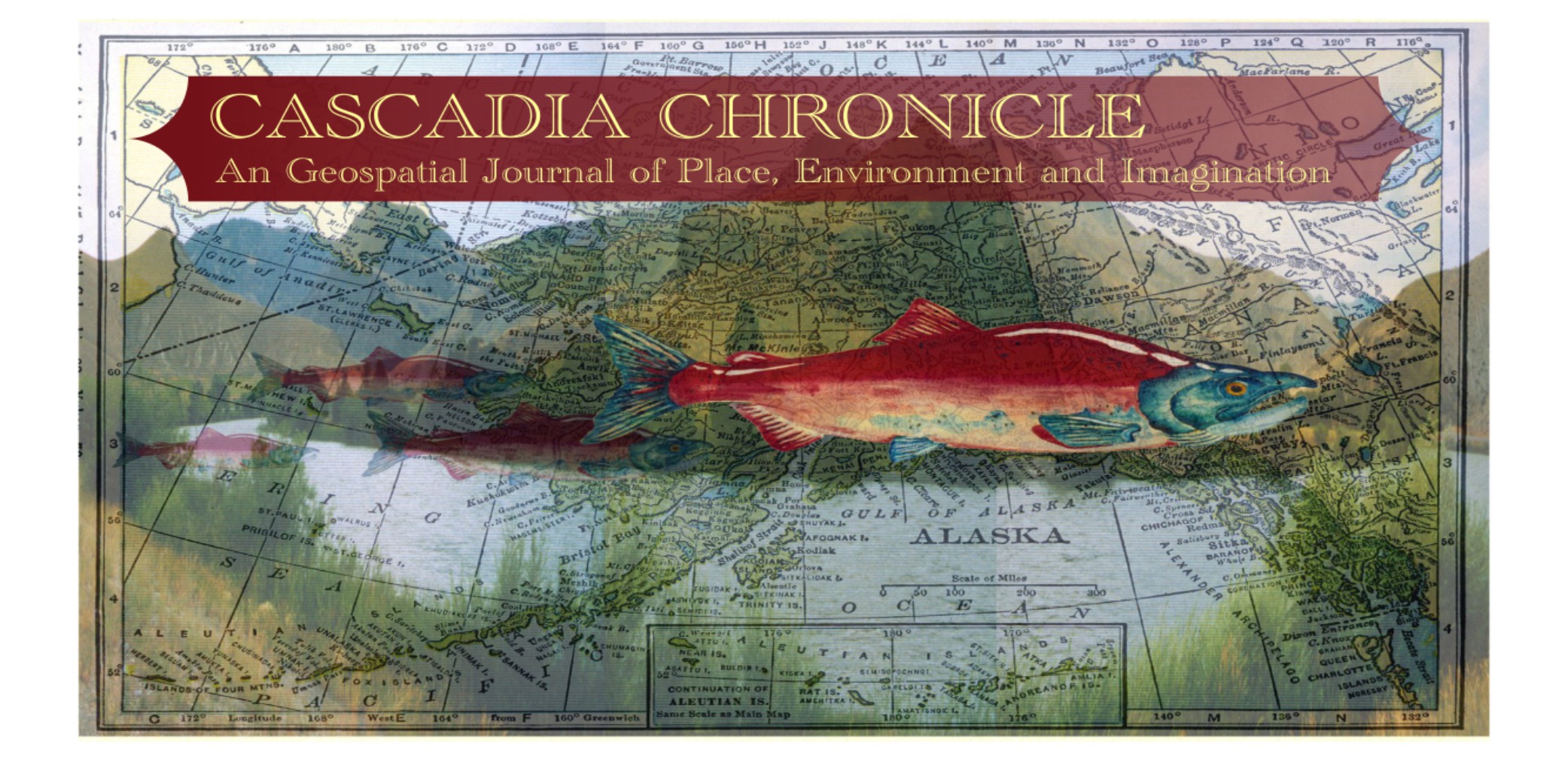Woody Guthrie and Sherman Alexie Narrate the Columbia
Narrating the Columbia
Overview: River Narratives
"Roll on Columbia" as a Colonial Narrative
- Read the longer version:
http://www.oldielyrics.com/lyrics/woody_guthrie/roll_on_columbia.html - Read the Washington state official version:
http://www.woodyguthrie.org/Lyrics/Roll_On_Columbia.htm [Note: An intriguing oral history at http://www.ccrh.org/oral/ohsoh/williamsc.php casts light on the episode from a Native American perspective, in which Sheridan hanged a Native American he suspected of disloyalty, solely on the evidence that his gun was still hot.]
Sherman Alexie's Postcolonial Vision: The Powwow at the End of the World(1996)
Read the full poem at: http://www.poetryfoundation.org/poem/177413
The flows of river, plot, and narrative have presumably been intertwined from the earliest history of literature and poetics. In the ancient Egyptian “Book of the Dead,” the current of river models the structure of the narrative and the movement of the soul through the domains of existence:
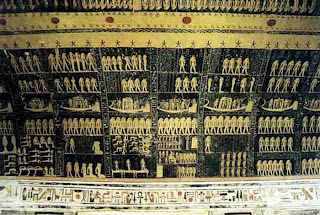 “What a journey I have made, the things I have seen... In my hand I grasp the sailing mast, while my left hand trails in the water... I have separated myself from myself to sail again on the green Nile waters. I sail to the temple where the gods have gathered to gaze at their faces in deep pools. In my boat the souls of the years sail with me.... Give me air to breathe and a strong sailing wind when I rise from the underworld.”
“What a journey I have made, the things I have seen... In my hand I grasp the sailing mast, while my left hand trails in the water... I have separated myself from myself to sail again on the green Nile waters. I sail to the temple where the gods have gathered to gaze at their faces in deep pools. In my boat the souls of the years sail with me.... Give me air to breathe and a strong sailing wind when I rise from the underworld.”
In innumerable literary texts, the journey along or across the river is an epic process of self-fashioning and self-discovery. One thinks of Huckleberry Finn and Jim rafting down the Mississippi; of the cyclical dreamer in James Joyce’s Finnegan Wake, beginning and ending at the edge of consciousness with the words, “riverrun, past Adam; of the four city dwellers canoeing down James Dickey’s Cahulawassee river in James Dickey’s Deliverance; of Sethe and Amy’s remarkable encounter on the banks of the Ohio in Toni Morrison’s Beloved, just before the ferryman Stamp Paid takes Sethe across the river to freedom.
Let us begin by comparing two well-known texts about the Columbia River, Woodie Guthrie’s 1941 “Roll on Columbia, Roll On” (significantly, in several different versions), and Sherman Alexie’s 1996 poem “Powwow at the End of the World.” Both texts are in important ways organized by the current of the Columbia; Guthrie’s proceeds down river, sequentially highlighting various sites of cultural and historic significance, while Alexie’s moves first downriver then upriver, following the path of a mythic salmon swimming up against the current. The two text differ dramatically, of course, in their treatment of Native American history.
Guthrie wrote “Roll on Columbia, Roll On” as part of a commission from the Bonneville Power Administration, which was seeking widespread popular support for the Federal system of hydroelectric dams. Although Guthrie saw himself as celebrating the heroism of ordinary workingmen, in retrospect it is clear that the lyrics are embedded in classic colonial discourse, taking hold of the land and subsuming indigenous history under the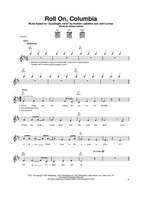 dominant signs of colonial hegemony.
dominant signs of colonial hegemony.
In the song, the river flow moves not only geographically from the northern and eastern interior towards the western coastline, but also in time, from the deep past towards the present moment. The mythopoetic structure of the lyrics, in this sense, maps a continuous cyclical progression from nature to culture, from frontier wildness to industrially civilized progress. This is especially evident if we consider the so-called “lost lyrics” of the song, in which Guthrie recalls the mid-19th century Indian Wars (verses that have been eliminated from the “official” version of the song, which was adopted as the official folk song of the State of Washington in 1987).
In both versions, Guthrie begins in mythic time, prior to the era of dam construction--from the Canadian stretch of the river down to the Pacific. Significantly, the first two lines of the opening verse are set in the past tense, leading to the final line’s present day imperative (with which each verse concludes):
"Green Douglas firs where the waters cut through.
Down her wild mountains and canyons she flew.
Canadian Northwest to the ocean so blue,
Roll on, Columbia, roll On!"
The celebrated chorus, repeated between each verse, continually brings us back to the present moment, as the technological harnessing of the river’s power brings electrification and progressive enlightenment to the region:
CHORUS: Roll on, Columbia, roll on.
Roll on, Columbia, roll on.
Your power is turning our darkness to dawn,
Roll on, Columbia, roll on.
Guthrie next enumerates the river’s tributaries, naming the various confluences in turn:
"Other great rivers add power to you,
Yakima, Snake, and the Klickitat, too,
Sandy, Willamette, and Hood River, too;
Roll on Columbia, roll On!"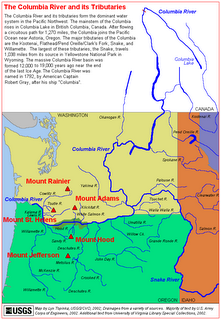
Guthrie then turns from geography to history. A verse, evidently added after Guthrie’s recorded his initial version of the song, alludes to the Lewis and Clark’s Corps of Discovery dispatched by Thomas Jefferson:
"Tom Jefferson's vision would not let him rest,
An empire he saw in the Pacific Northwest.
Sent Lewis and Clark and they did the rest;
Roll on, Columbia, Roll On"
The next verse (omitted from the official Washington State version) is the first to name specific geographic locations, and the first to reference Native Americans:
"Year after year we had tedious trials,
Fighting the rapids at Cascades and Dalles.
The Injuns rest peaceful on Memaloose Isle;
Roll on, Columbia, Roll On!"
Note that that the “we” in the first line refers to early white EuroAmerican explorers, trappers, and frontiersmen, not to Native Americans. The reference to the traditional Native American burial ground on Memaloose Island, just downriver from Lyle, Washington would seem to evoke the story of the white settle Victor Trevitt, who had married the daughter of a prominent American Indian leader and requested, “"I have but one desire after I die, to be laid away on Memaloose Island with the Indians. They are more honest than whites and live up to the light they have. In the resurrection I will take my chances with the Indians." --Source: History of Oregon Literature,, by Alfred Powers (cited in http://www.historicthedalles.org/history/victor_trevitt.htm)
[We might parenthetically that Guthrie’s assertion that the indigenous “rest peaceful” was manifestly untrue; the public attention to the island brought about by Trevitt’s burial led to extensive white looting of its gravesites in the years that followed.]
The next verse (retained in the official version) begins Guthrie’s account of the American Indian Wars, as EuroAmericans sought to ethnically cleanse indigenous communities in the Columbia basin and plateau during the mid 19th century. Guthrie specifically references a skirmish near the Cascades lock on the Washington territory side of the Columbia. Native American military fores, seeking to enter into Oregon and the Willamette valley were repulsed when Lt. Phillip Henry Sheridan sailed with American dragoons from Fort Vancouver:
"It's there on your banks that you fought many a fight,
Sheridan's boys in the block house that night,
They saw us in death, but never in flight;
Roll on, Columbia, Roll On!"
The next two verses (omitted from the official modern version of the song) continue the account of the Indian wars. Reference is made to an attack on March 26, 1856, by Native Americans of the Yakama (also known as Klickitat) and Cascades tribes on American settlers residing along the Cascade Rapids. Ten settlers and three dragoons were killed, but the attackers failed to destroy the steamer Mary, at the mouth of Mill Creek:
"Our loved ones we lost there at Coe's little store,
By fireball and rifle, a dozen or more,
We won by the Mary and soldiers she bore;
Roll on, Columbia, Roll On!"
The Indian Wars segment of the song concludes with a reference to Lt. Sheridan’s summary execution of Native American prisoners. Once again, the first person plural “we” clearly refers to white EuroAmericans:
"Remember the trial when the battle was won,
The wild Indian warriors to the tall timber run,
We hung every Indian with smoke in his gun;
Roll on, Columbia, Roll on!"
The song then proceeds from the frontier past to the technological present, celebrating two technological marvels of modern construction. First, to the Bonneville Dam, as Guthrie carefully reassures his listeners that the dams will not block river traffic and will, rather, enhance commerce up the river.
"At Bonneville now there are ships in the locks,
The waters have risen and cleared all the rocks,
Ship loads of plenty will steam past the docks,
So, Roll On, Columbia, Roll On!"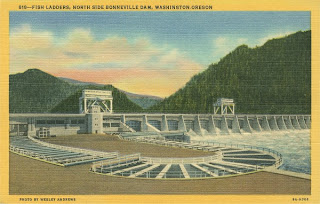
The song then travels back up river to celebrate the enormous Grand Coulee Dam:
"And on up the river is Grand Coulee Dam,
The mightiest thing ever built by a man,
To run these great factories and water the land,
It's roll on, Columbia, roll on."
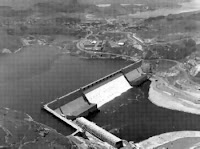
The final verse recapitulates the historical and geographic sweep of the entire text, conflating white trappers, soldiers and construction workers across the decades, emphasizing their common victory over nature and over the untamed indigenous:
"These mighty men labored by day and by night,
Matching their strength 'gainst the river's wild flight,
Through rapids and falls they won the hard fight,
Roll on, Columbia, roll on."
In writing "The Powwow at the End of the World," Sherman Alexie may or may not have been consciously responding to Roll On, Columbia, but his remarkable poem certainly does have the effect of shattering the colonial framework of the Guthrie song, while inverting many of the earlier song’s structural elements. While Guthrie sets his song in the mythic frontier past and the industrial present, Alexie enters into visionary prophetic discourse, looking towards a mythic future. Like Guthrie he names various geographical sites along the Columbia river, but with reversed intention, so as to undo the monumental structures of western industrial civilization in the Northwest.
While Guthrie concludes his song triumphantly with the Grand Coulee Dam’s construction, Alexie at the poem’s onset summons up an Indian woman overturning the dam. As in Guthrie's text, the river’s current structures the unfolding narrative, but with opposite effect:
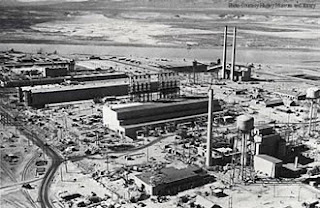
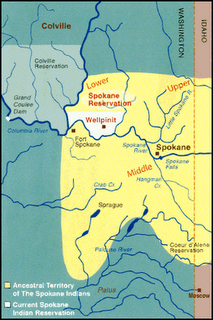
“I am told by many of you that I must forgive
and so I shall after the floodwaters burst each
successive dam downriver from the Grand
Coulee.”
Like Guthrie, Alexie early on traces the full course of the river to the Pacific:
“...I am told by many of you
that I must forgive and so I shall after the
floodwaters find
their way to the mouth of the Columbia River as it
enters the Pacific
and causes all of it to rise.”
For Guthrie, the force of the rivers waters rushed towards the telos of the great hydroelectric dams; whereas for Alexie, the river’s purified essence is driven towards a single mythic salmon, resonant with the indigenous reverential understanding of Salmon as a life-giving mythic being:
“I am told by many of you that I must forgive
and so I shall after the first drop of floodwater is swallowed by that salmon
waiting in the Pacific.”
Alexie then reverses the river’s flow, following the salmon upriver along the annual route of migration back to the originary spawning grounds. It passes the “flooded cities” and “the abandoned reactors” of the Hanford nuclear reservation, past the confluence of the Columbia and the Spokane, and to a “secret bay” of a reservation that is presumably the Spokane Indian Reservation in Wellpinit, Washington where he was born.
Guthrie celebrates the soaring shapes of the dams above the river, having rendered the Native American presence over and done with ("sleeping peacefully). In turn, Alexie’s salmon bursts above the river surface in a very different way, to re-awaken the indigenized landscape:
“I am told by many of you that I must forgive and so I shall after
that salmon leaps into the night air above the water, throws
a lightning bolt at the brush near my feet, and starts the fire
which will lead all of the lost Indians home.”
For Guthrie the Columbia’s energy is captured by the dams’ dynamos and domesticated into electrical powerlines, which are “turning our darkness to dawn”. In turn, for Alexie the movement of river and salmon are translated into three narratives that are to be told at night, before dawn:
“I am told by many of you that I must forgive and so I shall
after we Indians have gathered around the fire with that salmon
who has three stories it must tell before sunrise: one story will teach us
how to pray; another story will make us laugh for hours;
the third story will give us reason to dance.“
Guthrie concludes with white victory, synthesizing Westward expansion with the technological mastery of electrification; for Alexie, in his closing near-shamanic vision, the energies of flowing water and swimming salmon culminate in a great collective dance, that cyclically returns us to the poem's title line:
“I am told by many
of you that I must forgive and so I shall when I am dancing
with my tribe during the powwow at the end of the world.”
For all the differences, Guthrie and Alexie may be conceived of as creative bricoleurs, each contributing to the endless mythical refashioning of the Columbia riverscape. It is hard not to think of Franz Boas’ commentary on Northwest Native American mythology, famously repeated by Claude Levi Strauss: “It would seem that mythological worlds have been built up only to be shattered again, and that new worlds were built from the fragments.”
We invite further commentaries and reflections on how successive writers and artists have narrated the Columbian riverscape.
